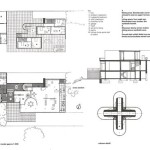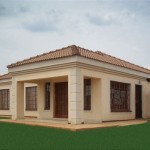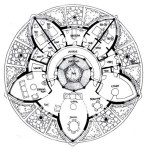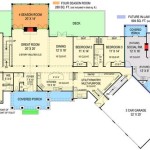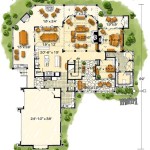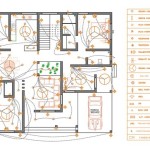Rose Seidler House Plan: A Deep Dive into Australian Mid-Century Modernism
The Rose Seidler House, located in Wahroonga, New South Wales, Australia, stands as a significant example of mid-century modern architecture. Designed by architect Harry Seidler for his parents, Rose and Max Seidler, in 1948 and completed in 1950, the house represents a bold departure from traditional Australian housing and a pivotal moment in the nation's architectural history.
The design embodies the principles of Bauhaus modernism, a style Seidler embraced during his architectural studies. Its innovative design sparked considerable public interest and even controversy upon its completion, challenging the prevailing architectural norms of the time. The flat roof, open plan layout, and extensive use of glass and steel were radical features in the post-war Australian landscape, accustomed to more conventional building styles.
The Rose Seidler House plan prioritizes functionality and integration with the surrounding bushland setting. The house is designed as a single-story pavilion, elevated on steel columns, minimizing its impact on the natural terrain. This elevated structure also allows for breathtaking views of the surrounding valley and fosters a sense of connection with the natural environment. The open plan living areas flow seamlessly, blurring the lines between indoor and outdoor spaces. Large expanses of glass further enhance this connection, allowing natural light to flood the interiors and visually extending the living spaces into the landscape.
A key element of the Rose Seidler House plan is its modular design. Based on a 3.3-meter grid system, the plan allows for flexibility and adaptability. This modularity is reflected in the arrangement of rooms and the placement of structural elements, providing a clear and organized layout. The grid system also contributed to the efficiency of construction and allowed for prefabrication of certain components.
Minimizing ornamentation and emphasizing clean lines are central to the house's aesthetic. The exterior is characterized by its simple geometric forms, unadorned surfaces, and a limited palette of materials, predominantly concrete, steel, and glass. This minimalist approach reinforces the focus on functionality and the inherent beauty of the materials themselves.
The interior spaces are equally streamlined and functional. Built-in furniture, designed by Seidler himself, seamlessly integrates with the architecture, further emphasizing the sense of unity and purpose. The open plan layout encourages a flexible and informal lifestyle, fostering a sense of connection between the different living zones.
The Rose Seidler House plan also incorporates several passive design strategies that were innovative for their time. The north-facing orientation maximizes solar gain during the winter months, while strategically placed eaves provide shade in the summer. Cross-ventilation is facilitated by the open plan layout and operable windows, promoting natural cooling and reducing reliance on artificial climate control.
The influence of the Rose Seidler House on Australian architecture is undeniable. It served as a catalyst for the acceptance of modernism in residential design and inspired a generation of architects to explore new approaches to housing. Its enduring legacy lies not only in its aesthetic innovation but also in its demonstration of the potential for incorporating modernist principles into the Australian context.
Today, the Rose Seidler House is open to the public as a museum, offering a glimpse into the lifestyle and design philosophies of the mid-20th century. Visitors can explore the meticulously preserved interiors and experience the innovative spatial qualities that define this iconic Australian home. The house stands as a testament to the enduring power of good design and its capacity to influence the way we live.
Studying the Rose Seidler House plan provides valuable insights into the key characteristics of mid-century modern architecture. Its emphasis on functionality, integration with nature, and minimalist aesthetics continues to resonate with contemporary audiences. The house serves as a powerful example of how innovative design can challenge conventional norms and shape the future of residential architecture.
The meticulous preservation of the Rose Seidler House ensures that this important piece of Australian architectural history remains accessible to future generations. Its continued relevance underscores the enduring appeal of modernist design principles and their adaptability to diverse contexts. The house stands as a reminder of the transformative power of architecture and its potential to enhance our lives and shape our understanding of the built environment.
Researchers and architecture enthusiasts can access detailed architectural drawings and plans of the Rose Seidler House, providing further insight into the technical aspects of its construction and the intricacies of its modular design. These resources offer valuable opportunities for studying the house in greater depth and understanding the innovative design solutions employed by Harry Seidler.
The Rose Seidler House is more than just a building; it is a cultural icon, representing a pivotal moment in Australian architectural history. Its influence continues to shape contemporary design and inspire architects to explore new possibilities in residential architecture. The house stands as a powerful testament to the enduring power of good design and its capacity to transcend time and trends.

Rose Seidler House Wahroonga Sydney

Rose Seidler House A 1950 Modern Classic Simple Floor Plans Architecture

Rose Seidler House Planimetrie Di Case Moderni Progetti Casa Piano Architettura

Canberra House 11 Northcote Crescent Deakin 1951 52

Rose Seidler House Floorplan Kiến Trúc Bản Vẽ

Rose House Vintage Plans
Rose Seidler House 3d Warehouse
Architectural Communications The Final Project Rose Seidler House

Rose Seidler House Wahroonga
Harry Seidler House 1951 3d Warehouse


